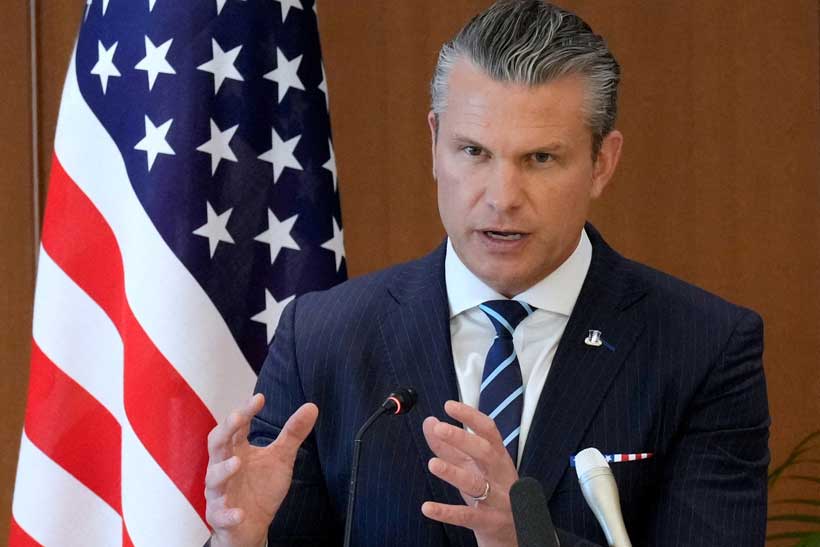U.S. Defense Secretary Pete Hegseth arrived in South Korea on Monday for high-level discussions expected to focus on reshaping the role of U.S. troops stationed in the country. The visit includes a tour of the Demilitarized Zone (DMZ) border with North Korea. Hegseth will hold the annual Security Consultative Meeting with South Korean Defence Minister Ahn Gyu-back, the premier forum where the two allies chart the course of their military cooperation and South Korea’s defense strategy against North Korea’s nuclear threats.
The discussions come amid U.S. plans to make the 28,500 American troops in South Korea more flexible, potentially allowing them to operate beyond the Korean peninsula in response to broader security threats, including the growing military presence of China in the South China Sea and around Taiwan. South Korea, which has 450,000 active troops, has long resisted any reduction or shift in the U.S. troop role, but it has steadily enhanced its defense capabilities over the past two decades.
Why It Matters
The talks are significant for regional security in Northeast Asia, where North Korea’s missile tests and nuclear advancements continue to heighten tensions. A shift in the role of U.S. troops could affect the balance of power not only on the Korean peninsula but across the wider Indo-Pacific, influencing U.S.-China strategic competition. Additionally, the visit underscores South Korea’s plans to increase its defense budget in 2026, partly in response to U.S. demands that allies contribute more toward hosting American forces.
U.S. officials have signaled support for making troop deployments more flexible to respond to emerging threats, including potential contingencies around Taiwan. South Korea has expressed caution over changing the U.S. troop role but remains committed to growing its wartime command capacity over combined U.S.-South Korean forces.
North Korea, meanwhile, has ignored diplomatic overtures and continues to expand both its conventional and nuclear military capabilities, heightening the stakes of any troop adjustments. Regional allies and partners in the Indo-Pacific are also closely monitoring the developments, given their implications for broader security cooperation.
What’s Next
Hegseth’s visit is expected to conclude with discussions on combined defense readiness, cyber and missile defense cooperation, and coordination with other U.S. allies in the Indo-Pacific. The annual meeting between the two countries’ top military officials will set strategic and operational directions for joint forces, aiming to deter potential threats and maintain regional stability. Observers will also watch whether the visit produces concrete agreements on the flexibility of U.S. forces or signals a broader shift in the alliance’s posture in response to North Korea and China.
With information from Reuters.
